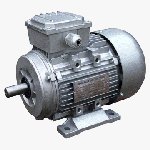Finding and Fixing Electric Motor Noise
Author: steve Published Under: Home
 Elect
Electric motors provide a very efficient and reliable power source, with uses in many applications, including home appliances and power tools. Electric motors are very common and in many cases, they can be repaired and fixed, rather than simply discarded when broken. One common problem, which is often found in split phase motors, is motor noise and motor vibration.
There are two types of motor noise, specifically mechanical and electrical.
Understanding and Locating Mechanical Noises
Mechanical motor noise is often caused by a poorly balanced rotor, which is referred to as a dynamic imbalance. If the rotor becomes unbalanced, small holes can be drilled into the rotor, which, by removing metal, helps to balance the rotor.
To check for a rotor imbalance, turn the motor off and listen for noises as the motor coasts to a stop. A vibrating noise will typically be heard. In split phase motors, the problem could also be caused by the centrifugal switch.
Noise could also be caused by faulty bearings, which is usually related to the preload of the bearings. Bearing preload refers to the axial thrust of the outer bearings, which race to eliminate rattling of unloaded bearings. If there are faulty bearings, the noise will not typically drop below forty decibels. However, it is normal for two identical engines to have slightly different sounds when in use.
Fans can also cause a great deal of noise, which will even occur when the motor is moving at a low speed. If the fan housing is misaligned, it is possible for the escaping air to create a siren like noise. It is also important to ensure that the fan blades have enough clearance when reassembling an electric motor, because if they are touching the motor housing, it will create noise. This noise is observable as soon as the motor begins to turn. Washers are usually used to ensure proper fan spacing in the motor housing, so pay careful attention to their placement.
It is also possible for the gear train to create mechanical noise, which usually becomes louder as the load on the motor increases. However, some gear noise is normal.
Fixing Mechanical Noises
The first step is, of course, to locate the source of the mechanical noise, which will provide a starting point in fixing the problem. It is also possible to enclose the motor and firmly mount it, so that many vibration related noises are removed. By using rubber, felt, and cork when mounting, much of the noise will be absorbed. Remember, that some mechanical noise is normal and to be expected.
Electrical Motor Noise
The other type of motor noise is electrical motor noise, which often sounds like a hum. Some humming is normal, but there are some common problems that can also cause motor noise.
One of the most common sources of electrical motor noise is a slip in the motor, which occurs when there is a difference between the speed of the rotor and the rotating field. Often, there is a great deal of slip in split-phase motors.
The air gap, which is the distance between the rotor and the stationary poles also causes electrical noise.